Grove - NFC Tag
Introduction
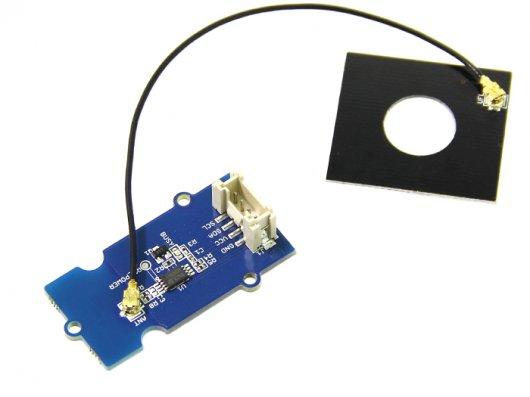
Grove - NFC Tag is a highly integrated Near Field Communication Tag module,this module is I2C interface,which base on M24LR64E-R,M24LR64E-R have a 64-bit unique identifier and 64 -Kbit EEPROM.Grove - NFC Tag attach an independent PCB antenna which can easily stretch out of any enclosure you use, leaving more room for you to design the exterior of your project.
Specifications
- Working Voltage:5V or 3V3
- Working Current<1mA
- Effective range<2cm
- Serve for contactless communication at 13.56MHz
- ISO 15693 and ISO 18000-3 mode 1 compatible
- 64-bit unique identifier (UID)
- Read Block & Write (32-bit blocks)
- Grove I2C Interface
Tip
More details about Grove modules please refer to Grove System
Platforms Supported
Usage
Read/Write from Mobile
- Download NfcV-reader for Android and install it
- We can Read/Write it from Mobile
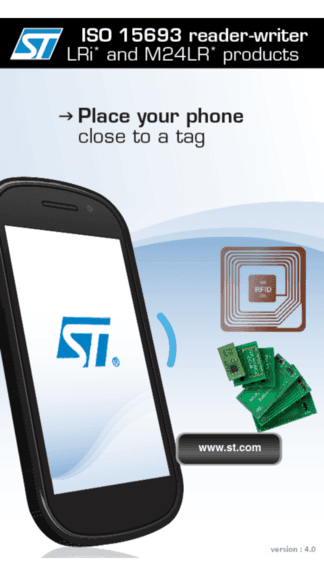
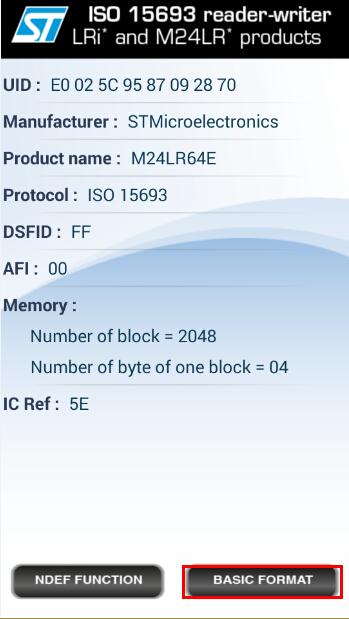
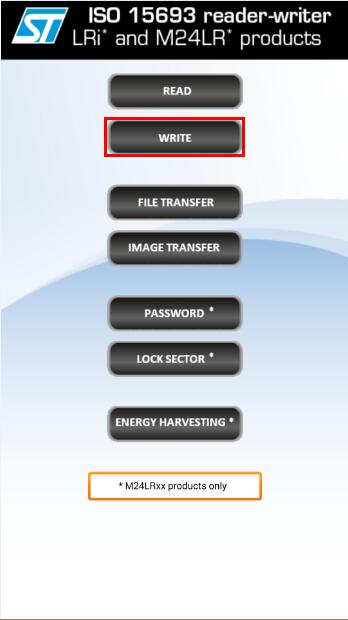
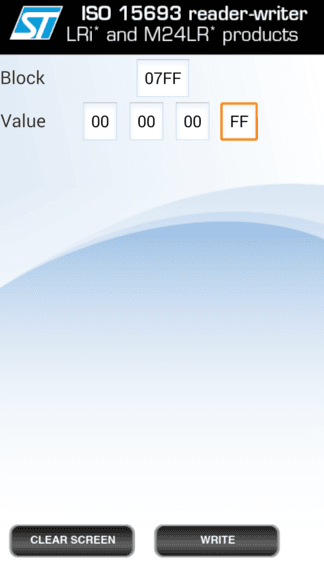
Control LED
- Hardware Installation
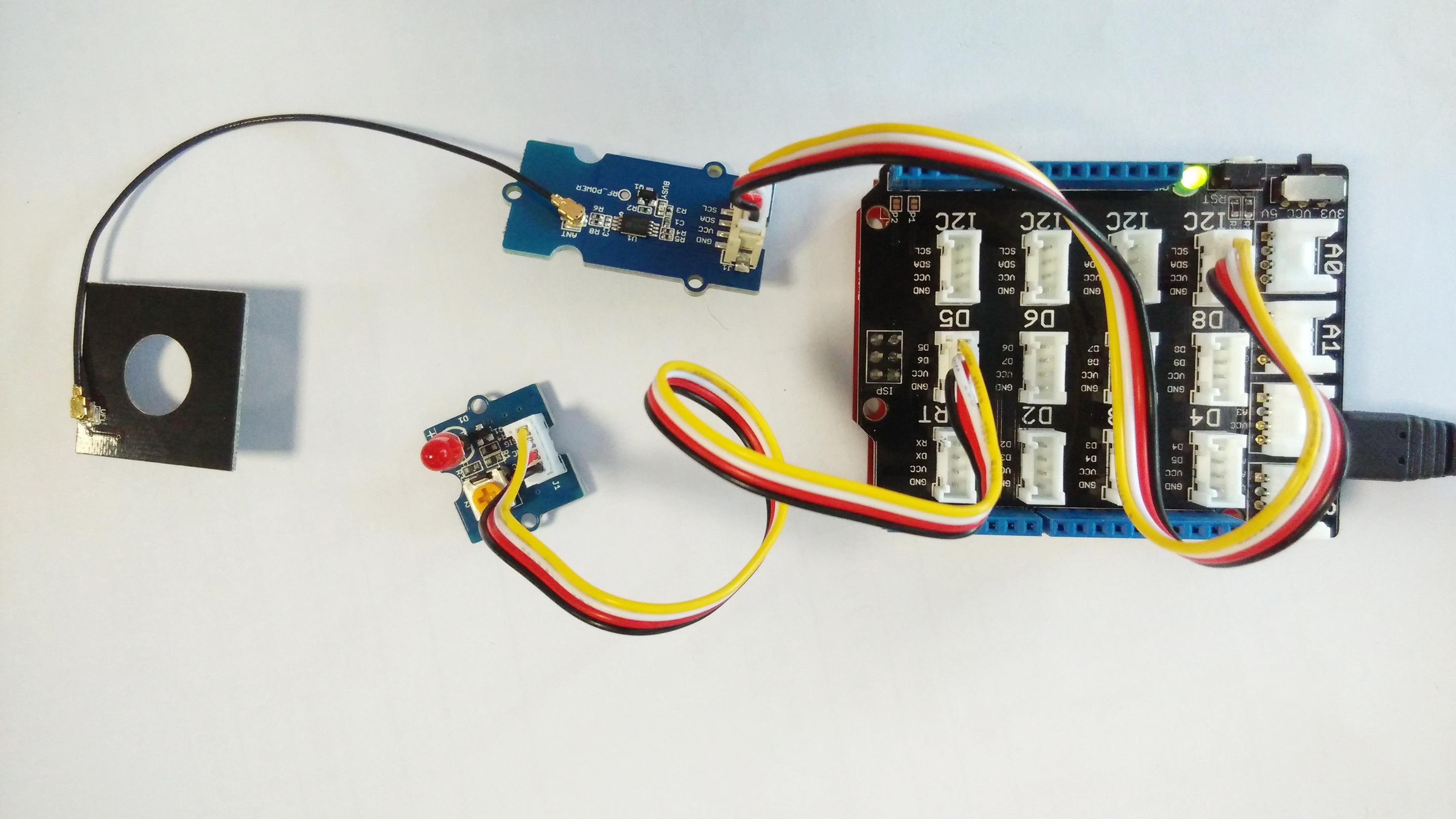
- Download NfcV-reader for Android and install it
- Download NFC Tag Lib, rename it to NFC_Tag_M24LR6E and put it into Arduino’s library .
- Open Arduino IDE. If Arduino IDE is already opened, restart it.
- In Arduino IDE, click menus: File -> Example -> NFC_Tag_M24LR6E -> ledControl
- Now, you can control LED from your phone.
#include "NfcTag.h"
#include <Wire.h>
NfcTag nfcTag;
int led = 5;
bool flag = false;
bool preFlag = false;
void setup(){
Serial.begin(9600);
pinMode(led,OUTPUT);
nfcTag.init();
}
void loop(){
flag = nfcTag.readByte(EEPROM_I2C_LENGTH-1) == 0xff?true:false;
if(flag != preFlag){
Serial.println("get remote NFC control signal!");
if(flag == true){
Serial.println("led will light up!");
digitalWrite(led,HIGH);
}else{
Serial.println("led will turn dark!");
digitalWrite(led,LOW);
}
preFlag = flag;
}
delay(5*1000);
}
Resources
- Grove - NFC Tag.PDF
- Grove - NFC Tag Eagle file
- M24LR64E-R datasheet.pdf
- NfcV-reader for Android
- NFC Tag M24LR6E Lib
| Arduino | Wio | BeagleBone | Raspberry Pi | LinkIt ONE |
|---|---|---|---|---|
 |
 |
 |
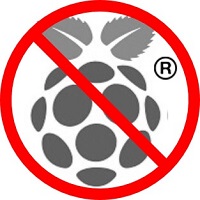 |
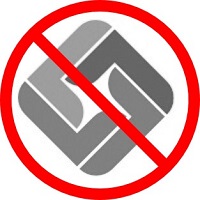 |
Caution
The platforms mentioned above as supported is/are an indication of the module's hardware or theoritical compatibility. We only provide software library or code examples for Arduino platform in most cases. It is not possible to provide software library / demo code for all possible MCU platforms. Hence, users have to write their own software library.
Help us make it better
Welcome to the new documentation system of Seeed Studio. We have made a lot of progress comparing to the old wiki system and will continue to improve it to make it more user friendly and helpful. The improvement can't be done without your kindly feedback. If you have any suggestions or findings, you are most welcome to submit the amended version as our contributor via Github or give us suggestions in the survey below, it would be more appreciated if you could leave your email so that we can reply to you. Happy Hacking!

